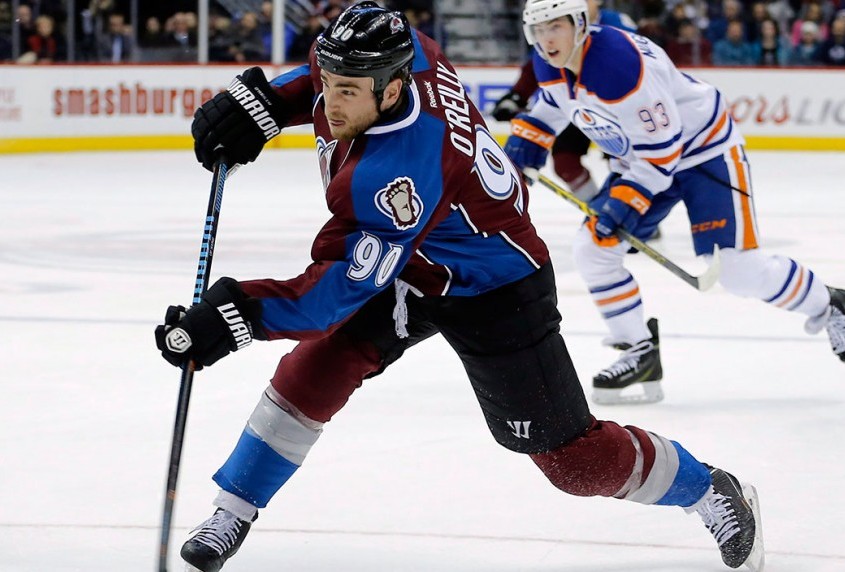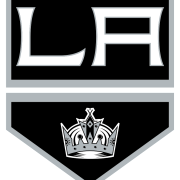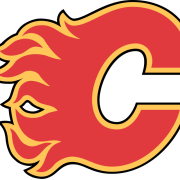2015 Draft Day Trades
(Major Trades)
by Steve Kournianos
June 30, 2015
steve.kournianos@thedraftanalyst.com
Tweet
Bottom Line:
The Skinny: Let’s get one thing out of the way: this was NOT a hockey trade. This was B’s rookie GM Don Sweeney essentially saying he had no interest in re-signing Lucic (UFA in 2016) to a long-term deal likely upwards of seven million a season. It looks like a poor trade for the moment since neither team benefits from this in the short term. The Kings were one of the league’s best possession teams and still missed the playoffs due to an inconsistent offense — a similar problem Lucic encountered on an individual level. Los Angeles loses, regardless of whether Lucic has a tremendous walk year or stinks up the joint. Another deep Stanley Cup run is one (and possibly the only) way for Dean Lombardi to justify surrendering a top-13 pick in an outstanding draft year, but we heard the same rhetoric when he traded a 2016 first rounder to rent Andrej Sekera for two months. If Lombardi retains Lucic long-term, good luck with the likely overpayment in the same offseason Anze Kopitar hits unrestricted free agency. Does Lucic give the Kings a legitimate top-line left wing for Kopitar and Marian Gaborik to gel with? Outgoing playoff hero Justin Williams wasn’t chopped liver, you know. The Bruins had to trade Lucic, and were smart to move him out of the conference. Using the Kings 2015 first (13th overall) on Czech puck mover Jakub Zboril, and getting pending-RFA Jones to likely backup Tukka Rask plus a very good offensive blueliner in Colin Miller seems like a decent enough haul to not only give Boston some serious goaltending depth, but provides Sweeney with the option to move either Jones or stud prospect Malcolm Subban, and still possess one of the East’s formidable tandems. But Lucic was a heart-and-soul player regardless of how maddening his inconsistency was, and Boston’s once-vaunted forward depth has been reduced to rubble.
Hard to Believe: Mind-numbing that Sweeney moved Lucic for money reasons after trading top defenseman Dougie Hamilton for (surprise, surprise) money reasons. With all the draft picks Sweeney acquired over the weekend (seven of the draft’s first 75 picks), sort of odd he didn’t use one of them to sweeten a deal to rid himself of Chris Kelly and his $3 million annual cap hit. Makes you ask yourself what the heck is going on in Boston.
2015 1st Round Pick
(15th – RW Zach Senyshyn)
2015 2nd Round Pick
(45th – C J. Forsbacka-Karlsson)
2015 2nd Round Pick
(52nd – LHD Jeremy Lauzon)
Bottom Line:
The Skinny: This was a home-run move by Calgary GM Brad Treliving. Any time you acquire a budding franchise defenseman south of 25 years old (Hamilton turned 22 earlier in the months), the cost can always be justified. Will Hamilton’s expected RFA deal along with Norris-caliber blueliner Mark Giordano’s pending waltz into unrestricted free agency tie Treviling’s hands down the road ? Possibly. But who cares? You just got Dougie Freakin’ Hamilton without hurting your playoff roster, and were still able to draft two picks in the second round. And yes, the balance of power in Alberta is still heavily tilted towards Cowtown. As for Don Sweeney, this was just a puzzling move. They did acquire three very good prospects, but only the swift-skating Senyshyn, a projected 2nd rounder, has a short path to the NHL. With Zdeno Chara turning 39 late next season, you wonder what the post-draft plan is for a team who were clearly hurt by last season’s forced trade of Johnny Boychuk. As unreasonable as Hamilton’s reported contract demands may have seemed to Sweeney, the trade of one of the game’s top young defenseman most certainly sets the franchise back. To where, however, remains to be seen.
Hard to Believe: Don Sweeney had the chance to play with and later partner with Boston and NHL great Ray Bourque, who on several occasions single-handedly (literally) carried marginal Boston teams to the postseason as a dominant two-way defenseman. And while Hamilton doesn’t seem to have a Bourque-type ceiling, it’s surprising that Sweeney — a former blueliner himself — was so quick to let money erode two core tenets of Bruins hockey — defense and counterattack. There is absolutely zero justification in trading away a 22-year-old top-pairing defenseman. So I guess Boston has become a reactionary franchise. Let’s not forget that this was a team who followed up a won a Cup, made another Finals appearance, followed that up with a President’s Trophy, and fell victim to a lengthy historic Ottawa run to put them in the lottery. All signs — cap or no cap — pointed to a solid core to build around, with Hamilton right in the middle of it. The signs are now covered in graffiti.
LHD Nikita Zadorov
C Mikhail Grigorenko
C/RW J.T. Compher
2015 2nd Round Pick
(39th – LW A.J. Greer)
Bottom Line:
The Skinny: Both teams do well in this one but from opposite ends of the trade spectrum. The Avalanche are coming off an underachieving season (mainly defense related) while the Sabres outdid them by simply being the worst team in the league. Colorado doesn’t have anyone in particular to replace O’Reilly’s significantly-disciplined, minute-munching, Selke-caliber play, but the Av’s internal cap plus wanting to give 2013 Calder winner Nathan MacKinnon more ice time as the second line pivot behind Matt Duchene makes this move completely acceptable. Acquiring former Bruin Carl Soderberg may help defensively, but the onus is on MacKinnon to replace O’Reilly’s consistent production. As for the Sabres, their desire to return to relevancy has been costly. Murray’s moves are seemingly part of some Scorched Earth policy to the farm system — the acquisitions of O’Reilly, goaltender Robin Lehner and last season’s Evander Kane/Zach Bogosian mega-deal with Winnipeg cost a total of six former or undrafted first round picks and three high second-round picks. That being said, by ridding himself of the now one-dimensuional Grigorenko and a problematic yet talented Zadorov, Murray has created a legitimate playoff contender on paper, especially by adding an underrated and battle-tested winger in McGinn, who always seemed to be buried by deep lineups. Getting O’Reilly locked up long term, however, is going to be costly.
Hard to Believe: The Sabres rebuild was officially over before the Jack Eichel Era even began. This team wants to win, and the strong relationship between owner Terry Pegula and Sabres fans has played a role (albeit a small one) in these blockbuster moves. On the Colorado side, Grigorenko has actually become a pretty decent defensive player who uses his size well in puck battles. Once considered a top prospect for his playmaking ability, you wonder long term if a focus on defending is the direction his development is taking him.
2015 1st Round Pick
(16th – C Matt Barzal)
*2015 2nd Round Pick (33rd)
*Traded the 33rd and 72nd picks in 2015 to Tampa for the 28th pick. New York selected C Anthony Beauvillier
Bottom Line:
The Skinny: Solid move by Isles’ GM Garth Snow for cutting sling load on a marginal-skating defense prospect in Reinhart and flipping him into two dynamic offensive players in Barzal and Beauvillier. Although Reinhart was the fourth overall pick in what now looks like a pretty average 2012 draft, he struggles with the ever-important transition part of the game. With an established top-four of Johnny Boychuk, Nick Leddy, Calvin De Haan and Travis Hamonic, and a blue chipper in Ryan Pulock, you could see why Snow moved him. The Islanders landing a lottery-projected gem like Barzal may not be a concern of Oilers’ GM Peter Chiarelli, but you wonder why he didn’t use a valuable chip like 16th overall to land an experienced two-way defenseman rather than a project. Still, the Oilers of the future are expected to have few worries in the transition department, so maybe it makes sense to count on at least one guy being back there. Whether he’s “back there” simply because he can’t catch up is another story altogether.
Hard to Believe: Barzal may have missed time due to a knee injury, but his WHL production post-injury and a dominant U18 tournament makes you wonder why he fell to 16th, especially when the goal-starved Bruins passed him despite having picks 13 through 15. Outside of Edmonton, I’d like to hear from one scout who would have traded Reinhart for Barzal straight up, let alone for an additional high second rounder. History is going to be kind to the Islanders on this one.
*2015 2nd Round Pick (57th)
*Rangers traded the 57th pick to Washington for the 62nd (RW Robin Kovacs) and 113th picks (C Brad Morrison)
2015 3rd Round Pick
(79th RHD Sergei Zborovskiy)
2015 7th Round Pick
(184th G Adam Huska)
Bottom Line:
The Skinny: This trade was more of a question of both when and how much rather than if it was ever going to happen. Talbot had been rumored to Edmonton as far back as the Spring, and while rumor mongers fanned the flames that Edmonton’s second first round pick — 16th overall from the Penguins in the David Perron trade — was in play, it seemed more likely that Rangers’ GM Glen Sather would extract something more reasonable. TSN’s Darren Dreger claimed New York was offered a first rounder, while another report indicated Sather was asking for both of the Oilers 2015 2nd round picks (No.’s 33 and 57) and a “player”. Clearly, Sather wanted to move Talbot as far away from New York as possible, so there’s a good bet the best offers (i.e. the ones he turned down) were from Eastern Conference teams. By sending Talbot as far north and west as possible for a bunch of draft picks he desperately needed, he killed two birds with the proverbial C.Y.A stone. The trade itself is pretty reasonable for both sides, as Edmonton took yet another stab at finding a reliable starting goalie without giving up any assets of significance. The Rangers, who are Stanley Cup contenders with or without Talbot, made a nice living turning late picks and free agents into bonafide NHL contributors, so keep an eye on all three picks. Talbot has dealt with pressure before, so an increase in both workload and expectations should have little to no impact on his game-to-game performance (his 36 starts last season, however, were the second most he’s had in his last 12 years of organized hockey). The only issue (and likely the reason behind the low cost): Talbot’s a UFA after next season.
Hard to Believe: Sather was presented with an opportunity to get creative and leapfrog into middle of the first round for the first time since 2011, but ended up with much less. His failure to trade Talbot before the draft and combine the picks from that return into something far better limited his chances of a adding a first-round talent. And while some could point to the draft’s significant depth as a reason not to trade up, at some point his trading of four consecutive first rounders (2013-2016) may come back to haunt him. Is Sather desperate? Not quite. But it should alarm Rangers fans that getting into the first round wasn’t as much of a priority despite have two very attractive pieces to trade.
2015 1st Round Pick
(21st – C Colin White)
Bottom Line:
The Skinny: No other way to describe this deal other than an absolutely outstanding move by Ottawa GM Bryan Murray. Holding the high ground due to a respectable goaltending logjam, Murray took $5.25 million off his cap hit by ridding himself of an inconsistent backup to a backup in Lehner and an aging checker like Legwand, with only one year left on his UFA deal anyway. Turning those two into the 21st overall pick (previously acquired from the Islanders in the Thomas Vanek trade) does wonders for the Sens prospect pool, especially since Murray already moved three first rounders to acquire Bobby Ryan. For Sabres’ GM Tim Murray, he comes full circle on the 6’4 goalie he had hand in drafting 46th overall for the Sens back in 2009. With the addition of Legwand and Ryan O’Reilly, you’d like to think Buffalo is committing (or at least pretending to be) towards limiting chances against. On the surface, it looks like Murray the Younger overpaid by choosing familiarity and contractual peace of mind (Lehner) over the better, cheaper player (Cam Talbot). Doubtful that Buffalo would have used the 21st overall pick on a two-way center like Colin White, who gives Ottawa’s farm system some much needed center depth.
Hard to Believe: Tim Murray has no choice but to go out and buy himself a goalie. And while he;’s been trying to justify (and lovingly praise) the cost of the moves he made over the weekend, it can still backfire regardless of what Jack Eichel develops into. It is somewhat shocking that Murray — a battle-tested amateur scout at heart — has been so quick to deplete his stockpiles for veteran players when his team was nowhere near contention. At the same time, Tampa swiped star netminder Ben Bishop from Ottawa, so there’s just as much a chance Lehner becomes the same for the Sabres.
C Sam Gagner
Conditional Draft Pick
(2016 4th Round Pick or 2017 3rd Round Pick – Conditions Not Released)
LHD Nicklas Grossman*
(Flyers retain 500K of Grossman’s $3.5 million AAV)
Chris Pronger’s Contract
($4.94 million AAV)
Bottom Line:
The Skinny: I don’t know if Flyers GM Ron Hextall has any Irish in him, but bet the farm he did some sort of a jig right after he hung up the phone with Coyotes GM Don Maloney. You can obviously see why the move needed to be made — Arizona needed to get to the cap floor, so they add one of coach Dave Tippett‘s former defensemen (albeit a very unreliable one) from his Dallas days, and take on the remaining two years/$10 million of not-so-retired defenseman Chris Pronger. Pronger, who now spends his days being a non-hockey player, has been hemming up Philly’s cap space at a tune of almost $5 million a season since he walked away from the sport entirely in November of 2011 without ever formally retiring. To rid himself of the mother of all his bitten bullets, Hextall received underachieving center Sam Gagner, who at best is a decent depth center but extremely easy to play against. With one year left and a cap hit of an even $3 million, the 26-year-old is a prime candidate for a buyout since Hextall (more like Ed Snider) would only be on the hook for a third of Gagner’s AAV. The conditions of the pick are unknown — but probably have something to do with Grossman re-upping and/or playing in a certain amount of games for the Yotes. Cap circumvention? Seriously? Who cares? In Philly today, they can simply say, “He’s gone!”
Hard to Believe: It’s no coincidence that the Flyers have failed to make any noise in the postseason since Pronger left the game while keeping his cash. His yearly cap hit prevented Philadelphia from making any significant moves during either the offseason or to gear up for a playoff run. With close to $8 million in additional cal space from this deal alone (that’s if they choose to buy out Gagner), and the removal of one of their worst defensemen, you have to consider the Flyers a real threat in the East this year if Hextall continues to make smart decisions like this one.
Bottom Line:
The Skinny: For the Rangers, this trade was just like a ripping a Band-Aid off a hairy forearm; the sting is excruciating yet short lived and ultimately forgettable. Sure, the speedy Hagelin (27 years old on opening night) was a gem of a late-round find (168th overall in 2007) before turning into one of the Rangers’ better role players. But his reliable yet limited two-way play coupled with over-exposure from three deep postseason runs essentially made the arbitration-eligible Swede a cap disaster in waiting. The secondary and tertiary effects from committing long-term to Hagelin were far too dangerous, so Sather nipped the problem in the bud by shipping him to Anaheim for a similar player in the 23-year-old Etem, who’s an RFA coming off an ELC with an 870K cap hit. Is Etem an enigma? Absolutely. A former 61-goal scorer in junior and 2010 first rounder, Etem has had trouble finding a place in the NHL not on the bench or in a sky box. Why? Despite a pretty appealing combination of strength, speed and size, the California Kid can’t finish . The popular Hagelin, on the other hand, is a consistent performer and durable as well (only 10 games missed combined over the last three regular seasons). In terms of the picks involved, the jury is out on Gropp, the powerful winger who performed well on an under-strength Seattle (WHL) club but raw in the way 2011 first rounder J.T. Miller was, while Anaheim’s selection of Finnish pivot Julius Nattinen addresses an organization need for center prospects . The Rangers seem to like reclamation projects and throwing them into the fire early, so don’t be surprised if Etem finds his way onto their top six at some point. Solid hockey trade for both teams.
Hard to Believe: The Ducks love speed, and getting a more consistent roadrunner like Hagelin help offset the likely offseason loss of UFA LW Matt Beleskey. What’s actually surprising is the Ducks have enough cap room to keep both of them. Probably won’t happen, but Anaheim remains an example of how to properly build a contending team without the benefit of multiple lottery picks and cap-busting contracts.
















